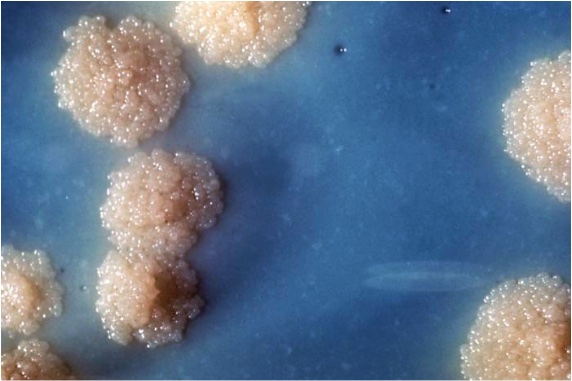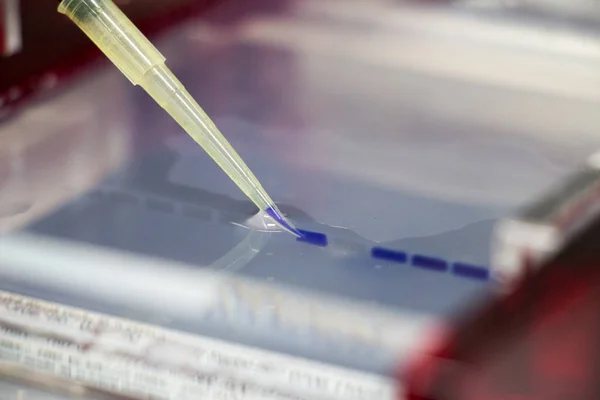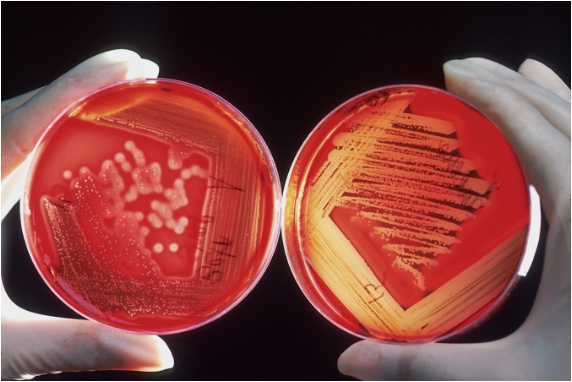Thousands of laboratories cultivate bacteria, but the scientists who do this work are not really interested in the bacteria themselves, but rather in what they make. When new recombinant DNA technologies in the 1970s made it possible to use bacteria as customised gene and protein factories, the humble Escherichia coli—a gut bacterium used as a tiny labourer in this work—leapt from the small niche of microbiology labs to many others around the world. E. Coli is used today in research fields as diverse as cancer, viruses and plant physiology. All this would not have been possible without a reliable method to grow bacterial cultures, now standardised worldwide, using a solid medium in Petri dishes. The innovator who introduced this medium, the American Fanny Hesse (22 June 1850 – 1 December 1934), has been forgotten for almost a century. Only recently has there been a resurgence of interest in the story of the woman who deserves, in her own right, the title of the mother of bacterial cultures.
The story of Angelina Fanny Eilshemius is similar to that of many other women whose contributions have only been appreciated and acknowledged long after their death. Fortunately, some existing details of her early biography come from a reliable source: her grandson Wolfgang Hesse, an internal medicine physician who in 1992, in retirement, wrote a short biography of his grandparents for ASM News, the newsletter of the American Society for Microbiology. There Hesse recounted that Fanny was born in New York as the eldest of ten siblings—only half would survive—to a wealthy family of European emigrants, Dutch and French-Swiss respectively. The Eilshemius family was reportedly related to a German-born physician living in Brooklyn named Richard Hesse. His younger brother Walther, also a doctor, visited him there a couple of times while working as a doctor on a German passenger liner, and was introduced to the Eilshemiuses, including Fanny.
AN ARRANGED MARRIAGE
Fanny was given no other education than that typical for the young ladies of her time: refined, but only cooking and housekeeping. At the age of 15 she was sent to a finishing school in Switzerland to perfect her French and study home economics. On the occasion of a visit from her parents, she travelled through Europe to Dresden, where she was reintroduced to Walther Hesse. Their marriage was soon arranged, as Walther, a doctor in a family of doctors, was an admirable catch. The wedding took place in 1874 and shortly afterwards they settled in the Erzgebirge mountain region between Saxony and the Czech Republic, where Walther was assigned to work as a doctor in the uranium mines. At a time when the health effects of the radioactive ore were not yet known, Walther treated countless cases of lung cancer there, which were attributed to arsenic. This, combined with the miserable working conditions of the miners, sparked his interest in public health and environmental hygiene.

As a doctor’s wife devoted to looking after the house and raising their three children, the figure of Fanny—or Lina, as she was known in the family—was obscured at that time. Walther travelled to Munich to broaden his knowledge of environmental hygiene, a subject on which he published several studies and which ended up orienting him towards bacteriology, then a nascent science. In the 1860s, the French chemist Louis Pasteur had developed his pioneering experiments on microbes and their relationship with disease, and in the early 1880s a German bacteriologist named Robert Koch was making his mark. Walther Hesse came to his laboratory in Berlin in 1881, in a role equivalent to a postdoctoral researcher today, to study microbial contamination in air, drinking water, swimming pools and treated wastewater. This not only stimulated him to devise new sampling and cultivation techniques, but also introduced him to research on bacterial metabolism and the role of microbes in communicable diseases. The following year, Koch identified the tuberculosis bacillus—a finding so momentous that, in the words of his friend and colleague Friedrich Löffler, it turned Koch “overnight into the most successful and outstanding researcher of all times.”
However, there was a problem with bacterial cultures. For his air pollution sampling, Walther used glass tubes with a gelatine coating as a solid medium. But it was no longer solid during the height of summer or at incubation temperatures, as gelatine liquifies above 30 °C. In addition, certain bacteria devoured the gelatine, destroying the cultures. Walther and Koch tried using potato slices to grow isolated colonies, but without much success. Walther then turned to the person who knew best about food ingredients and their properties: his wife, Lina.
FROM THE KITCHEN TO THE LABORATORY
In fact, during the whole time Walther was developing his career, Fanny had not been cooped up at home. On the contrary, she had become a dedicated and conscientious laboratory assistant, indispensable for experimental work, albeit always in the shadow of her husband. Moreover, with an artistic streak that she had inherited from her family—she was a grandchild of the Swiss painter Louis Léopold Robert (as was Walther), whose work is mentioned in The Count of Monte Cristo—Fanny proved to be an excellent scientific illustrator, drawing the microscopic preparations for her husband’s studies.
But as any biologist or experimental chemist can attest, the laboratory and the kitchen have certain similarities, which must have been much greater in those still very artisanal times. So when Walther asked his wife why her jellies and puddings stayed solid in the heat, she had the answer: agar-agar, a gelling agent extracted from some species of algae and used in cooking in the tropics, which she had learned about in New York from a Dutch neighbour who had lived on the island of Java.

The use of agar was a success: it remained solid up to 90 °C, was transparent, could be sterilised and mixed with other ingredients, was resistant to microbial enzymes, and could be stored for a long time. The new agar cultures boosted Walther’s work, but also that of Koch, who in his celebrated 1882 study on the tubercle bacillus wrote: “The tubercle bacilli can also be cultured on other nutrient substrates, if the latter possess similar properties to the solidified serum. They are able to grow on a solidified gel which remains solid at incubator temperature, prepared by adding agar-agar to a meat infusion or peptone medium.” But he did not explain why this new medium was developed, let alone give any credit to the author of the innovation.
AN ESSENTIAL CONTRIBUTION NEVER RECOGNISED
Fanny Hesse’s discovery was of enormous power. Agar plates for bacterial culture are now used in their millions all over the world for the growth of heterogeneous mixtures of bacteria and for the isolation of clonal colonies, as well as for the cultivation of plants. One of its two components, agarose, is the essential ingredient in gels that are also prepared by the thousands in laboratories around the world to separate and purify biomolecules, especially DNA fragments. Agar and agarose are on the regular shopping list of every molecular biology laboratory, and are two products that can never run out, or all scientific work will grind to a halt.

And yet Fanny Hesse never sought any recognition for this. “In the Hesse family, this contribution to bacteriology was hardly ever mentioned,” wrote grandson Wolfgang Hesse. “Lina never spoke about it, probably because she was a very unassuming person.” That being the case, she did not seek to exploit it commercially either; according to Wolfgang, she thought “it would not have been proper“. In the years that followed, Walther continued his successful career as a public health and environmental expert in Europe and the USA, until his death in 1911. Fanny would live for 23 more years. When her family home in New Jersey was sold during World War I, her share of the inheritance was seized as enemy property. Years later she would receive some money for it to supplement her small pension. After her death, much of the Hessian legacy in Dresden was destroyed by Allied bombing raids during World War II.
In 1939, medical historians Arthur Hitchens and Morris Leikind published an article on the introduction of agar into microbiology, for which they contacted Friedrich Hesse, a surgeon and son of Fanny, who provided them with information about the Frau Hesse who was said to have been the author of this innovation. At the end of the article, Hitchens and Leikind asked themselves: “Could not plain agar from now on be designated as Frau Hesse’s medium? Her contribution to bacteriology makes her immortal.” But their proposal did not catch on. The culture plates that were originally named after Koch are now known by the name of the man who actually invented them, another of his assistants, Julius Richard Petri. But agar is still simply agar.
Comments on this publication